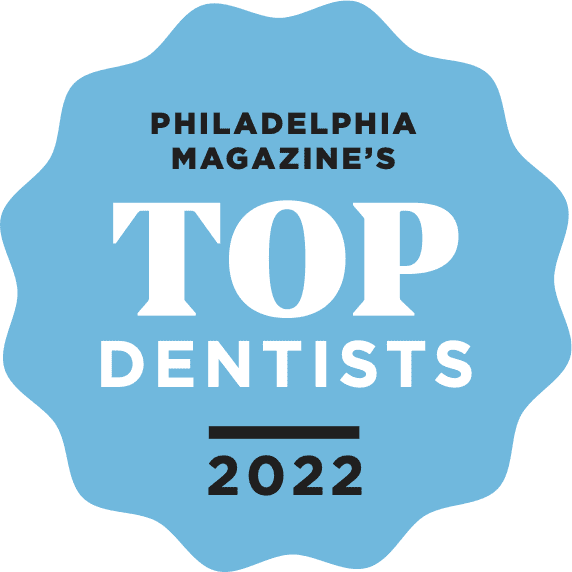Gum disease is an infection in the gum tissue that can leave a significant amount of damage to your smile. About half of the adults in the United States will contract this infection and suffer lasting effects, even after treating it.
Gum disease can mess with the structure of your teeth and also affect how your smile looks, which might leave you unhappy. Your dentist can check out these issues and figure out the best way to get your smile back in shape. Read on to learn about the types of cosmetic dental issues that can develop because of gum disease, and how your dentist can fix them.

The Visual Impacts of Gum Disease
Reduce Puffiness in Gum Tissue
During the early stage of gum disease, or gingivitis, bacteria irritate the gum tissue. This creates inflammation that will make the gums bleed, turn red, and swell. You might feel self-conscious about the puffy appearance of your gums that can distract from your beautiful smile.
Fortunately, the puffiness will go away when your dentist gets rid of gum disease through periodontal therapy. The dentist will perform an extensive cleaning technique known as scaling and root planing to remove excess plaque and bacterial buildup. Then without bacteria there to hurt the gums, the swelling will reduce.
If your gums are still puffy or you’re feeling other uncomfortable symptoms after the treatment, your dentist might have to take more serious action to get your gums back to being healthy. Don’t brush off these symptoms. They could be a sign that the infection is sticking around.
Align Shifted Teeth
Gum disease can cause both swelling and recession of the gum tissue. And this could affect the position of your teeth in your smile. The damage to the tissue can push on the teeth so that they shift out of place. This can make your teeth appear crooked or create gaps between them.
Even after your dentist deals with your gum disease, those alignment issues in your smile will still be there. But you can ask your dentist about cosmetic dental solutions to make your smile straight again.
Invisalign, for instance, uses clear aligners to gradually guide teeth into your desired straighter position. Or a dentist might use tooth bonding to close gaps or black triangles that interrupt the full, straight look of your smile. You will get a custom treatment plan to restore the appearance of your gums when you visit for a dental exam.
Replace Missing Teeth
Gum disease is the leading cause of tooth loss in American adults. Advanced infections will reach beyond the gum tissue to the tooth root and jawbone. The damage bacteria wreck there could cause a tooth to fall out of its socket.
Losing one or more teeth will leave gaps in your smile that could impact your confidence in its appearance. And you could also be at risk of further oral health complications without tooth replacement from your dentist.
Ask your dentist if you qualify for implant dentistry, the most beneficial treatment method for replacing missing teeth. Your dentist will discuss your preferences and your oral health to find the best restorative solution for your needs.
Darkened or Receding Gum Lines
Advanced gum disease can cause the gum tissue to recede and expose more of the tooth’s root. This not only makes teeth appear longer but can also lead to dark triangles or shadows between teeth, disrupting the symmetry of your smile. In some cases, the gums may develop a darker, more purplish hue because of chronic inflammation.
Cosmetic gum treatments, such as gum contouring or pinhole surgical techniques, can reshape and restore a more balanced gum line. For discoloration, professional cleaning combined with improved oral hygiene can help return gums to a healthier pink shade. In severe cases, gum grafting may be necessary to cover exposed roots and improve both aesthetics and sensitivity.
Stained or Damaged Teeth from Bacterial Buildup
Gum disease often goes hand-in-hand with plaque and tartar accumulation, which can cause stubborn surface stains on teeth. Additionally, as gums recede, the exposed root surfaces are more prone to decay and discoloration. This can create noticeable yellow or brown spots near the gum line, making your smile appear aged or unhealthy.
Professional teeth whitening can help brighten stained enamel. You might need bonding or veneers to cover discolored root surfaces. Your dentist might also suggest antimicrobial treatments to prevent further bacterial damage and keep your smile looking fresh.
Sunken Facial Appearance from Bone Loss
One of the most significant aesthetic effects of advanced gum disease is jawbone deterioration. When bacteria destroy the bone supporting your teeth, it can cause facial collapse over time and a sunken or prematurely aged appearance. This is especially common in patients who have lost multiple teeth because of periodontal disease.
Dental implants are the most effective solution for preventing and reversing bone loss because they stimulate the jaw just like tooth roots. For patients with significant bone atrophy, bone grafting may be necessary before implant placement to restore facial structure. Addressing bone health not only improves your smile’s appearance but also helps maintain a more youthful facial contour.
Restore Your Smile’s Beauty Today!
Gum disease doesn’t have to leave a lasting mark on your smile. Whether you’re dealing with puffy gums, uneven gum lines, shifted teeth, or tooth loss, modern cosmetic dentistry can help you regain confidence. Don’t let gum disease dictate the look of your smile.
Call our office today to book a personalized dental exam. Our team will assess your needs and create a tailored treatment plan to revive your smile’s health. Your dream smile is closer than you think.






